19 September, 2020
Why Travelling By Train Is A Better Opti…
Uzbekistan is the country of beautifully designed architectural and archaeological historical monuments. Uzbekistan Destinations are famous for representing the history and facts behind the beautifully structured and unique buildings. Uzbekistan gradually opening up to the world in the post-Karimov era, the country’s tourism industry is now undergoing a period of rapid development.

As a Central Asian nation and the former part of Soviet republic, Uzbekistan is a treasure of mixed culture and traditions. The history, archaeological sites, unique architecture, its unique taste foods, cultures, unique designed of building’s interior and exterior make Uzbekistan world famous.
Let us give you a list of Uzbekistan Tourist Attractions that can make you starve to taste the Uzbekistan culture and enjoy Uzbekistan Destinations.
As the first international championship Golf course in Central Asia, Tashkent Lakeside Golf Club is famous place to spend the golf holiday. If Golf is your favourite sports, then do not waste time and start a golf tour in Uzbekistan. Located at a distance of 20 minutes from Tashkent, the lakes’ surrounding the course offers a nice view and challenges to both experienced and new golf players.
As one of the most important and oldest repositories in the Central Asia regions, National Library of Uzbekistan founded in 1870 as the Tashkent Public Library.The library was named after AlisherNavoi, the great poet, statesman and the founder of Uzbek Literature. The library is a national repository of Uzbek and foreign publications and is a coordinating centre for library science, bibliography, and the history of librarianship in the Republic.
After the broke up of Soviet Union in 1990, there are some buildings with soviet architecture in Tashkent. The massive hotel of Uzbekistan at Amir Timur Square of Tashkent is the proof of modernist architectural style of soviet. Another example is the former Lenin Museum, which is now the State Museum History of Uzbekistan. Other examples of architectural design of Soviet are: Brutalist styled concrete housing blocks, Ostentatious government buildings, and heroic statuary in the public places.
Located in the village of Sun (Kuyosh), in Parkent district of the Tashkent region, Solar Institute is the second facility in the world in Uzbekistan followed by France. This was the Physico-Technical Institute, NGO “Physics Sun”, that was established in 4th Nov, 1943. This is the first academic institute in Central Asia to work on large-scale fundamental and applied research in the field of physical science and technology. Due to the efforts of Uzbek academician Said AzimovichAzimov, the project “Sun Institute of Uzbekistan” has become possible. That’s why it is also known as the “brainchild of Said Azimov”. In 1970, he also created “Big solar furnance” of Uzbekistan for environment-friendly renewable energy sources.
As a unique object for museum, scientific and cultural center, International Caravanserai of Culture was opened in 2002, named after Ikuo Hirayama, a famous Japanese painter. Ikuo Hirayama International Caravanserai of Culture, in Tashkent centre offers opportunity to students to take a tour of history of the Great Silk Road and enjoying the music concert played by MashuKomadzaki, a Shakhrizabs International Makom Festival awardee. The name of museum is also related with caravanserai of the past as it was a resting place for traders and travellers.
The monument in the crossroad of Tashkent is dedicated to LalBahadurShastri, the Indian Prime Minister, also a top-level freedom fighter as Mahatma Gandhi. Famous for the slogan “Jai Jawan, Jai Kishan” or “Hail the Soldier, Hail the Farmer”, Shastri went to discussion after getting call from USSR. After 1965 Indo- Pak war, USSR called India Prime Minister and Pakistan President Ayub Khan to Tashkent for the negotiation between two countries for trade and economic relation, known as “Tashkent Declaration”. After signing on the documents, Shastri felt uncomfortable and died one hour later due to heart attack. Shastri was the first citizen of the country who was awarded as the “Bharat Ratna”.
Salar canal was dug a thousand years ago and now it belongs to the water system of Tashkent City and also a part of the modern territory of Tashkent. It was originated from the Bozsu River. The beginning structure of this canal is located on the lower tail of the Salar hydropower in the Kibray district of Tashkent. Salar canal water used for irrigation purposes, for watering streets, and satisfies the needs of industrial enterprises.

Known as the capital of Karakalpakstan province in Uzbekistan, Nukus is the sixth largest city of Uzbekistan. The name of the city comes from the old tribal of Karakalpaks. As a most isolated city, it was home for chemical weapons with Chemical Research Institue of Soviet’s Red Army, which has dismantled by US Dept. Of defense in 2002.
Surrounded by monotonouus landscape of desert with dry shrubs, Nukus is famous for world-class Savitsky Art Museum or Nukus Museum of Art.
Opened by I.V. Savitsky in 1966, you can see collected items like carpets, jewellery, and clothes of Karakalpaks culture by Savitsky. It is the second largest collection of Russian avant garde paintings with 82, 000 works of art.
The work of Soviet architecture and beautiful mosaics can be seen on the old buildings of Nukus. You can visit the parks of boulevard in the centre of Amu Darya River.
The ancient necropolis of Mizdakhan, outside of Nukus, represents ancient civilizations, religions and traditions. Visit Quar Qala Fortress on the top of hill opposite to Mizdakhan.
The ship cemetery in Moynaq and Aral Sea have been the major attractions for most of the traveller.
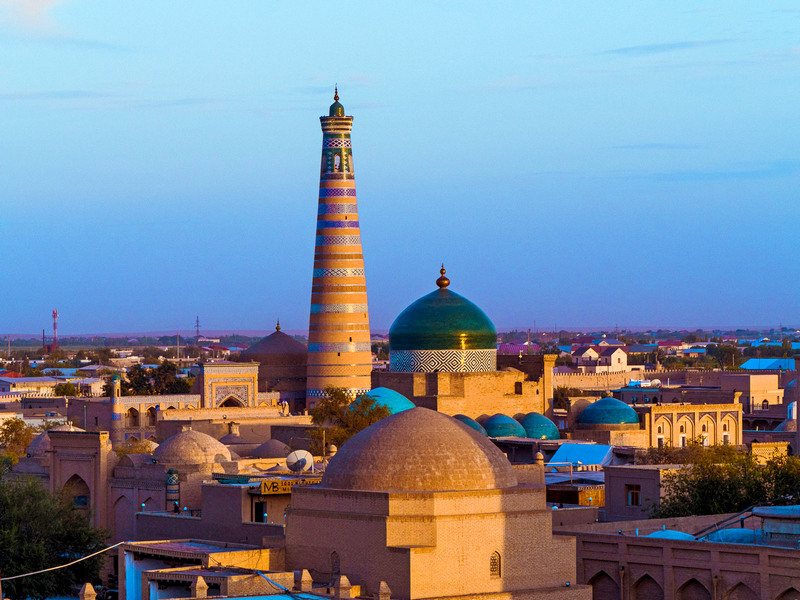
Well known for Ichan Kala, the first protected place by UNESCO of Uzbekistan as world hertage site, Khiva City is located in Xorazm region, Uzbekistan.
Ichan Kala is an inner world city, sometimes criticised as lifeless – a ‘museum city’ for its so well preserved place of minarets, madrassas and other wonderful monuments with Islamic architecture. Ichan Kala town has more than 50 historic monuments and 250 old houses.
Khiva is divided into two different areas, which are Ichan Kala, the older city within the wall, and the Dichon Qala, the modern city, outside of the wall. Khiva was founded about 2, 500 year ago as per the history whereas, the archaeologists claimed that it was founded in 5th or 6th century.
Khiva city was once known as slave market, barbaric cruelty on slaves, exhausted desert journeys and trading place on Silk Road. With 93 mosques and 63 mederassahs, now Khiva is one of the important Islamic centres of Central Asia.
According to the history, One of the sons of Prophet Noah, named as Shem, while sleeping in the middle of desert, he dreamt about 300 torches. Then he dug a well, known as “Kheyvak”, which means “sweet water” or expression of “What a pleasure!”. Now, the well can be seen inside of Ichan Kala.
There are many historical and archaeological sites you should explore in Khiva. Toprak-Kala & Ayaz-Kala are two archaeological sites in the city, you should visit.
To explore the architecture of 18th century Madrassas, you should witness the work of Kutli Murad Inak Madrassa. Visit Khan Allakuli Madrassa, the 2nd biggest madrassa of Khiva with 99 cells in your Khiuva city tour. Uc Avlija Mausoleum is the 16th century mausoleum located in the east of Ichan Kala.
Khan Anush Mohammed’s Bath of 17th century shows the most comfortable bathroom of that time. The bathroom has dressing room, lavatory, bassin, well with cold water and floor heating.

Lying on the west of Samarkand, Bukhara is the 5th largest city of Uzbekistan. As an ancient city, this place was a stop on the Silk Road trade route between the East and the West and a centre of Islamic theology and cultury.
This city has 140 architectural monuments and the local language is Tajik. This city is hub for commercial trade, scholarship, culture and region. UNESCO has listed sites of Bukhara city as a World heritage site.
You should visit the Ark of Bukhara, an ancient fortess of 5th century with other historical monumemnts with Islamic architecture.
Other places you should visit are:
Po-i-Kalyan Complex: Thi architectural complex is located at the base of great Kalyan minaret. The complex also has a mosque with a capacity for twelve thousand people. The mosque and madrassah shows the finest art work with Islamic architecture. There were 288 domes and 208 pillars at the time of construction.
Mir-i-Arab Madrassah: With the outsatnding Islamic architecture, this madrassah is one of the oldest religious school which is in operation till now.
Lab-I Hauz Complex: Built in 17th century, the complex is got its name from Persian word which means “the pond”. For the water, Uzbekistan people uses this type of places a long years ago. In the painting and architecture, you will see thye spark of animals and birds.
Bahoutdin Architectural Complex: To commemorate Bahoutdin, the founder of Naqshbandi order, this cemetery was built.
Visit famous mausoleum such as, Chashma-Ayub mausoleum, Ismail Samani Mausoleum of Bukhara.
For mosque, visit Bolo Haouz Mosque, Char Minar, Magok-i-Attari Mosque and Mir Sayyid Ali Hamadani Mosque.
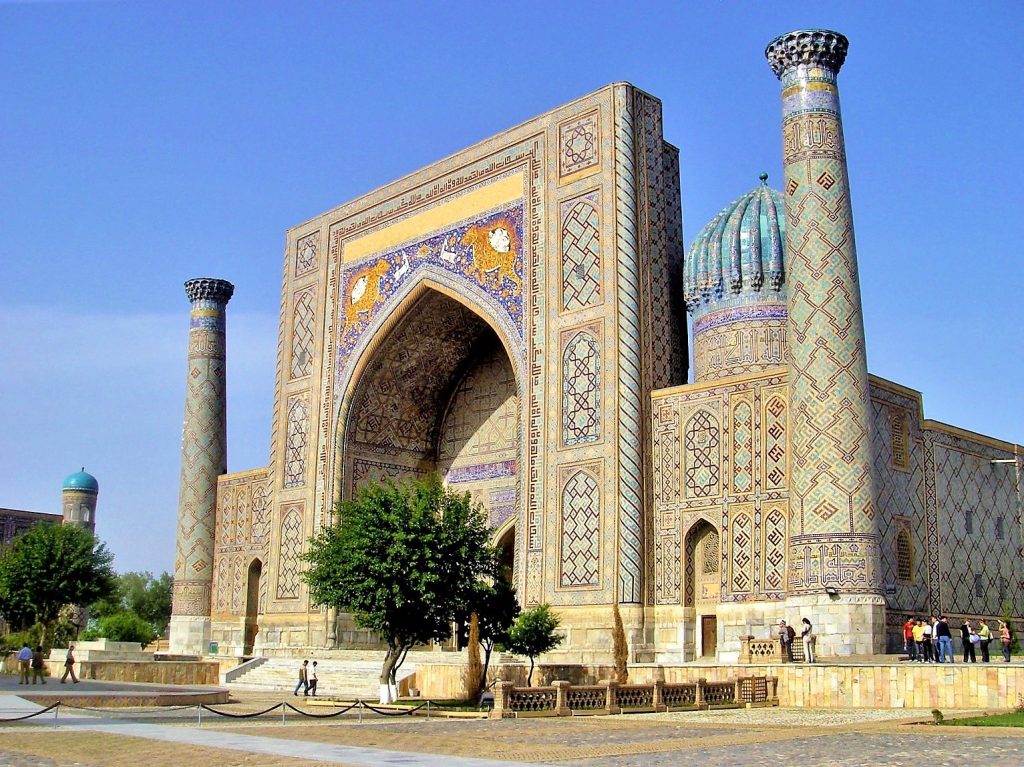
Known as the second lragest city of Uzbekisatan, Samarkand is situated on the valley of Zerafshan River. Samarkand represents the mix culture of Iranian, Indian, Mongolian, western and eastern.
Due to its unmatched dazzling beauty, poet and historians called it “Rome of the east. The beauty of sublunary countries, The Pearl of Eastern Muslim World”. As one of the oldest cities in world, Samarkand was conquested by Alexander the Great, the Arabic, Ghenghis-Khan and Tamerlane.
As a legendary city on Silk Road, Samarkand was an intersection of trade routes like, routes to the west to Persia, to the east of China, to the south of India. The city is listed under UNESCO World heritage site, as its material and spiritual values in ancient archaeological sites with the beautiful marvellous Islamic architecture.
The city is full of ancient monuments like Mausoleums, Mosques, Madrassahs, Museums, etc. with the interior deciorated with floral and vegetal symbols.
There are different sites which makes the city special such as Registan square, Shahi zinda mausoleums, Gur-Emir mausoleum, Bibi Khanum Mosque, Sher-Dor Madrassah, Observatory of Ulugbek, Mausoleum Ishratkhana, etc.
Located in Qashqadaryo region in southern Uzbekistan and 80 km south of Samarkand, Shakhrisabz is one of the most charming and colourful cities.
Founded in 2700 years ago, it was the famous center of culture, trade and handicrafts. After attack of Alexander the Great in 329 BC, the city became centre of Hellenistic culture and cult of the Greek gods.
This city is famous for Amir Temur or Tamerlane, who was born in the village of Hodja-Ilgar. After becoming the ruler, he turned this city as his residence and built the Ak-Saray palace.
Known as the “green garden”, Shakhrisabz is an ancient with a lot of architectural sights. The historical centre of this city is under UNESCO World Heritage list.
In the centre of Shakhrisabz city, you will find the Ak-Saray palace, Dorut Tilovat memorial complex, Kok-Gumbaz Mosque, Dorus Siodat mausoleum, Shamsad-Dina Kulyala, Gumbazi-Seyidan, Amir Temur monument.
The city is famous for its brand wine, peculiar carpet weaving, fine embroidery, Uzbek caps and other handicrafts.
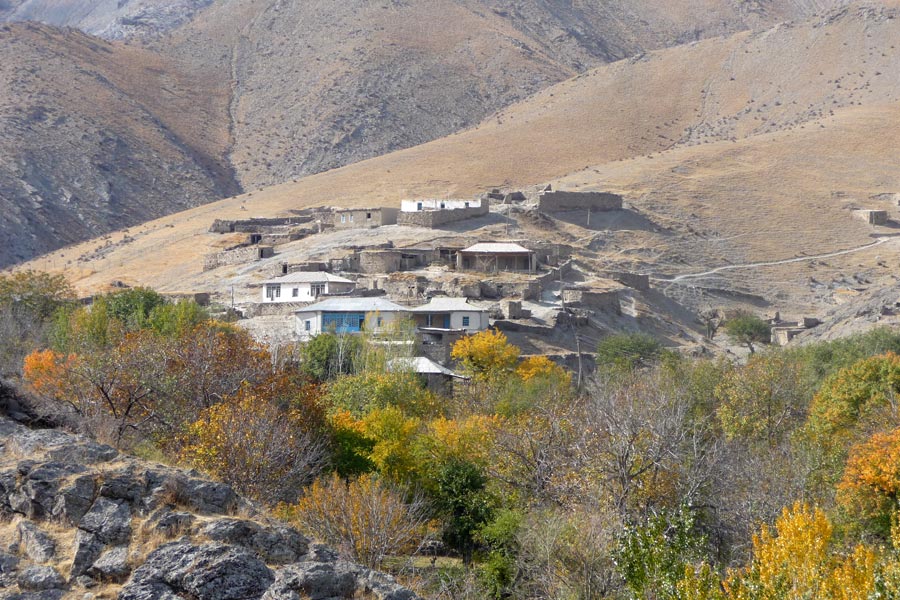
Located in the foothills of Nuratau Mountains, Nurata is the administrative and cultural centre in mountain area in Navoi region. With a distance of 200 km from Samarkand, Nurata is originated from the Nur Fortress, founded by Alexander the Great. Nurata means “Ray of Father” or “Ray-father”.
The Chashma complex is an important Islam centre in this region and the pilgrimages from neighbouring cities every year.
The chashma complex has Djuma Mosque, quba, bath house, hills, and the well with holy spring. The speciality of this spring is its temperature , which is 19.5 degree celsius and thev composition includes 15 microelements such asa golds, silver, iodine, bromide, etc.
The tourist spots are, Nur Fortress, Spring water, Chasma.
Like a miracle of nature, Lake Aydarkul is in the middle of the desert. With 3000 square metres, the length is 250 km and width from 8 to 15 km. Tourist often likes to ride horse or camel around the area of lake.

Known as the capital city of Uzbekistan, Tashkent City is the oldest among the cities on the Great Silk Road between China and Europe. With its unique flavour, Tashkent represents architecture work of both Soviet and Islam.
In 14th-15th centuries, the city was the part of the Timurid Empire and in 16th century, it was under the control of Sheibanids dynasty. In 1865, the city became a part of Soviet and in 1930, Tashkent became capital of Uzbekistan.
The tourists pl;aces you should visit are Tashkent TV Tower, German church, Polish church, Amir Temur square, Astronomical clock, etc. There are Tashkent traditional museum and Tashkent theatres you should visit in your Uzbekistan tour.
Museum of Astronomy was opened on 16 November 2009 in Central Asia to honour the great ancestor MirzoUlugbek on his 615th anniversary. It is the oldest scientific institution in the whole Central Asia Region. It was created in collaboration with UNESCO. It was founded in 1873 as Tashkent Astronomical Observatory in 1873. You can find the rich collection of astronomical instruments used in the past. It was visited by thousands of students, research scholars, academic lyceums and professional colleges throughout the year.
Founded on 30 November 1939, this theatre with a premiere “Maysara’s tricks”, Khamza’s comedy which includes the largest masters of the Uzbek musical and dramatic theatre. In 1939, it divided into Bolshoi theatre and Mukimi theatre. Built in 1943, Mukimi theatre contributes to the history of the city and Uzbekistan.
With the premiere “Uncle Tom’s Cabin”, Youth Theatre of Uzbekistan was founded by Dr. S. Etienne and Artist S. Malt on 30 April, 1928. After division into two parts on 13 May 1967, one for Uzbek and another for Russians, the Theatre of Young Audience was renamed as Youth Theatre of Uzbekistan in 1998. With 40 projects played on the stage, this theatre took part in many international theatre festivals.
Founded by VasilyAlexandrovichChirkin on 21st October, 1934, Academic Russian Drama Theatre in Tashkent is one of the oldest theatres in Uzbekistan. In 1967, this theatre was awarded the honorary title “Academic”. In different years, there have been performances played by Russian, Uzbek and foreign playwrights. With 631 seats, this theatre shows the preservation and dissemination of Russian culture.
The museum was named after the YunusRajabi, the famous wonderful musician, as the museum was his house. This museum is the youngest commemorative museum in Tashkent. With a memorial room to practice, the museum had four halls in which his accomplishments and art ideologies were shown.
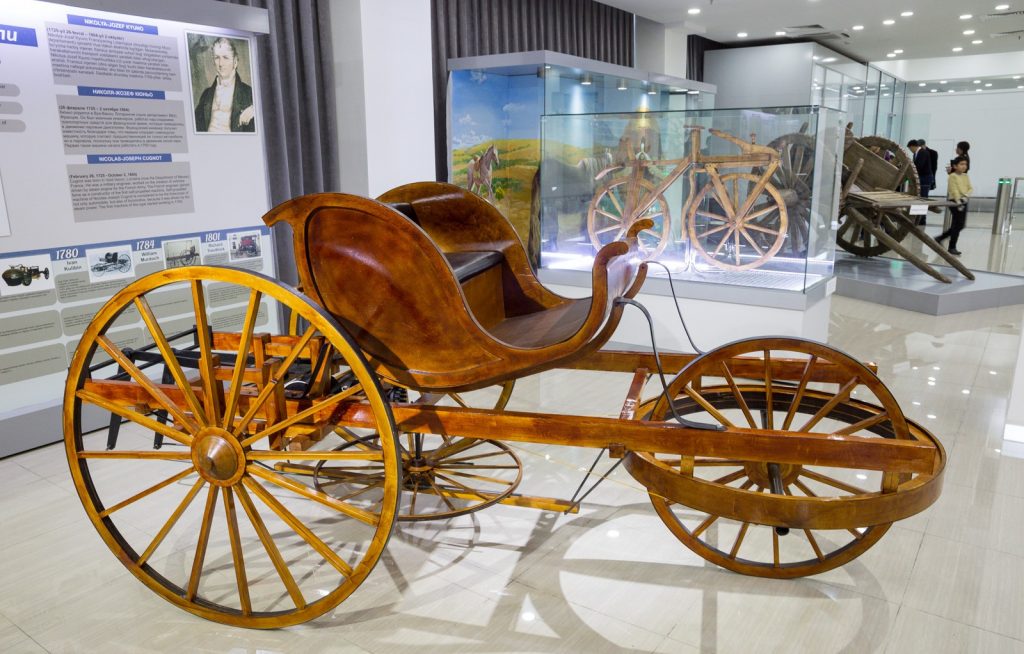
Located nearest to the AmirTemur square, Tashkent Polytechnical Museum was opened in November 2015. This Museum has two sections. The ground floor is for Automobile construction where you can find from the simplest and oldest wheel carts to the recent most developed cars including the famous inventions like Model T by Henry Ford, Volkswagen Beetle, and Moskvich-400. On the second floor, you can enjoy practically the fun facts of physics in this entertainment park.
Created in 1981, the museum has 3000 exhibits, like Sergey Esenin’s autographs, lifetime edition of his works, photographs and numbers of personal items. The museum is named after the Great Russian poet Sergey Yesenin.
The Museum is famous for the MukhtarAshrafi, the famous Uzbek composer and conductor, People’s Artist of USSR, the dedicated person for the development of Uzbekistan’s music culture. He lived and worked from 1965 to 1975 one of the apartment of this museum. You can find manuscripts, pictures, documents, playbills, handbills, books, printed music, records, collection of Uzbek musical instruments and personal archives of MukhtarAshrafi.
Having a rich culture Uzbekistan has paintings and arts carved on the rocks. The petroglyphs can be found in KarakiyasayGorge on the southern slope of Karzhantau. Karakiyasay petroglyphs can be found in a huge canyon which has a depth of 50 m. There were 90 stones with more than 1015 individual paintings and scenes found till now.
Opened in 1988, Museum of Geology has 12 halls with 9 categories of findings and mineral resources in Uzbekistan. These are Mineralogy, Geology, History of Uzbekistan, Paleontology, Ancient minning, Geological studies of the Kitab Reserve and others. Located in the downtown area of Tashkent, Museum of Geology has more than 50, 000 exhibits.
The Centre of National Arts has both conventional and contemporary art of Uzbekistan. These are painting, sculptures, drawings, design, cinematography, theatre, national dance and weaving. You can see different types of folk crafts such as metal carving, ceramic, gold embroidery, etc.
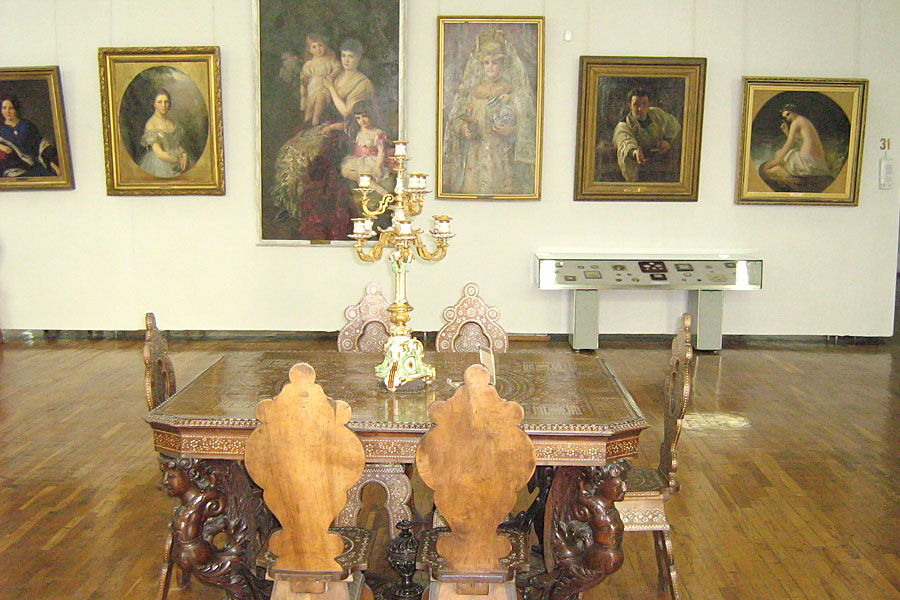
State Art Museum was established in 1918 and has 100 works of sculpture, paintings, drawings, porcelain by Russian and Western European masters. You can find Ganch engravings, ceramics, painted and engraved wood items, embroideries, carpets and decorative metal objects.
The Central Exhibition Hall of the Academy of Arts was opened in 1974. It is a major hall in the country and Asian region. You can see graphic arts, paintings, sculptures and applied art in the exhibition hall.
On the memory of the people killed or imprisoned as a result of repressions and persecutions, the Museum of Victims of Political Repressions opened in 31st August 2002 in the capital of Uzbekistan. Now, August 31 is celebrated as the Day of Remembrance of the Victims of Political Repressions in Uzbekistan. There were a lot of people of Uzbekistan arrested and killed in the regime of Joseph Stalin
This Mausoleum is dedicated to SheykhZayniddin, an early proselytizer of the Suhrawardi order of Islam. The suhrawardisufi order was founded by ShakhobiddinSukhravardi, the father of SheykhZayniddin, also the poet, sheikh and leader of Baghdad Sufis. SheykhZayniddin is also famous as “bobo” or “grandfather” for his wit, wisdom and erudition.
Located near the Independence Square of Tashkent, art gallery of Uzbekistan was initiated by Islam Karimov, President of Uzbekistan in 1994. The gallery has fine art collection by National Bank for Foreign Economic Activity of Uzbekistan (NBU). The main exhibition area of gallery has 15 rooms, a conference room, lecture hall, small cinema hall, library and studio.
The German Kirche is an Evangelical Lutheran Church which was built in the center of SadikAzimovStreet. It was made by the Tashkent Lutheran community in 1899 and for the Lutheran Germans who served in the troops of Imperial Russia.
Located on the cemetery to the southwest from Zangiata mausoleum, Anbar-Bibi Mausoleum was made for “Kambar-ana”, the wife of Zangi-Ota and also known as patroness for women and mothers. Women pilgrims from all around of Uzbekistan come here for child, well-being and prosperity for their families.
The chapel is the oldest monument of pre-revolutionary Orthodox confession in Tashkent. It was set between the Kamolon gates and Muslim cemetery. You can find a prism in the chapel with an icon on the one side. An inscription from the Testament can be found on the prism side whereas the names of soldiers can be found on the other side. You can also found Small Park near the memorial in there.
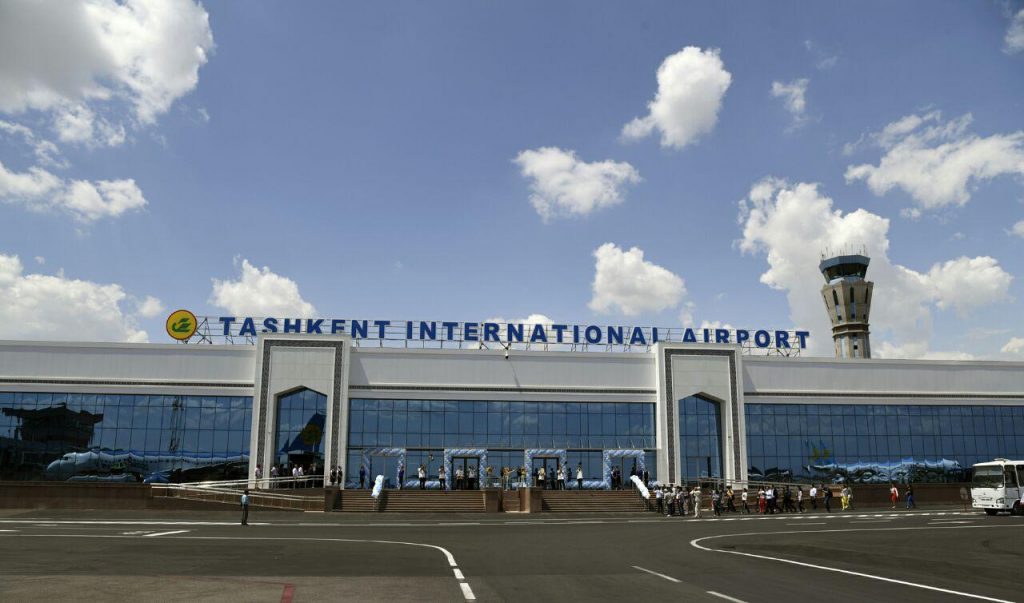
Known as the 3rd busiest airport in Central Asia, Tashkent Airport is located at a distance of 12 km from the centre of Tashkent. The airport has two terminals, one is Terminal 2 for international flights and the other one is Terminal 3 for domestic flights. The full name of the airport is Islam Karimov Tashkent International Airport.
Tillya Sheikh Mosque is one of the largest mosques in Tashkent and also a part of Hast Imam Center, the famous historical and religious complex. The mosque consists of the winter building, summer yard, dome in the center and dome gallery. It was constructed by Tillya Sheikh, one of the trader and richest men, in 1903.It is also known as the Friday Mosque.
Imam Al-Bukhari Islamic Institute was founded in 1971 by Sheikh ZiyauddinkhanibnEshonBabakhan, the Islamic leader, chairman of the Spiritual Authority of the Muslims, preacher and scholar. The institute is located in the ancient mosque Namazgokh. The trained students of this institution work in both religious and secular institutions.

As one of the Uzbekistan Destinations, Memorial house museum of Tamara Khanum is dedicated to Tamara Khanum, the great singer and dancer. Born in Armenia, Tamara Khanum has completed her graduation in Moscow theatre school in 1925 and also started her concert activity. She appeared in the concerts of Paris and other European cities. She has a major contribution for opening the musical drama theatres in different Uzbek cities.
Tashkent Museum of Railway Technics is one of the major Uzbekistan Tourist Attractions. Opened on 4th August 1989, this museum hosts 13 steam engines, 18 diesel and 3 electric locomotives. This museum is exposes evolution of railway transport and also a beautiful park. This place is the favourite place for photography for both professional and new photographers. People also choose this place for wedding corteges.
Situated in the Botkin Cemetery territory, St. Alexander Nevsky Cathedral is one of the most-favoured Uzbekistan tourist spots, built in between 1903 and 1904. As an oldest orthodox church in Tashkent, the interior of church is decorated with fresco depicting community of saints, angels, and archangels with many icons in gold plated frames.
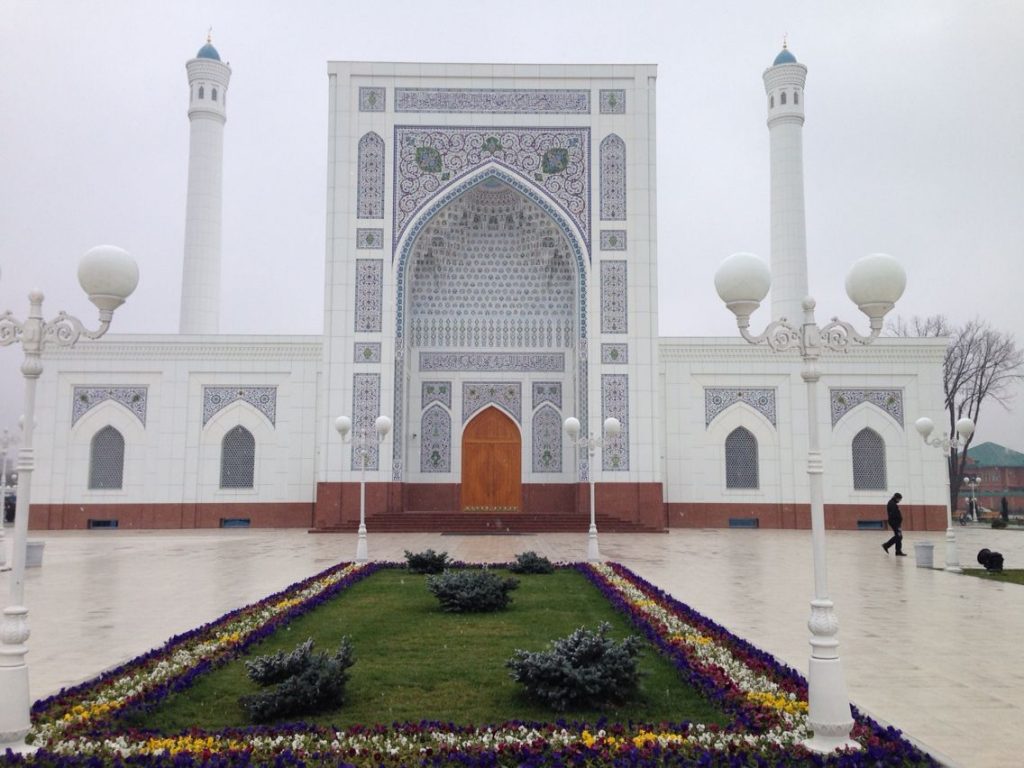
Also known as “White Mosque”, Minor mosque was opened on 1st October 2014. This mosque is mostly favored by city residents for a leisure walk. Newly built mosque became one of the best Uzbekistan Tourist Places for its best traditions of eastern architecture. The marble finishing of the mosque differs from other old mosques. With a capacity of more than 2400 people, this mosque is divided as open front part with terraces, and big round hall with gold plated mihrab. This mosque is famous as one of the Best Uzbekistan Tourist Spots as it is situated on the embankment of the Ankhor channel and surrounded by a vast landscape.
Opened in 1981, Tansykbaev Memorial Museum is located among the apartment buildings. It was a small house of Ural Tansykbaev, an outstanding artist of Uzbekistan. ElizavetaYakovlevna, the wife of Ural Tansykbaev was the founder of this memorial. You can find small garden created by Ural Tansykbaev and also 4000 exhibits including 400 paintings.
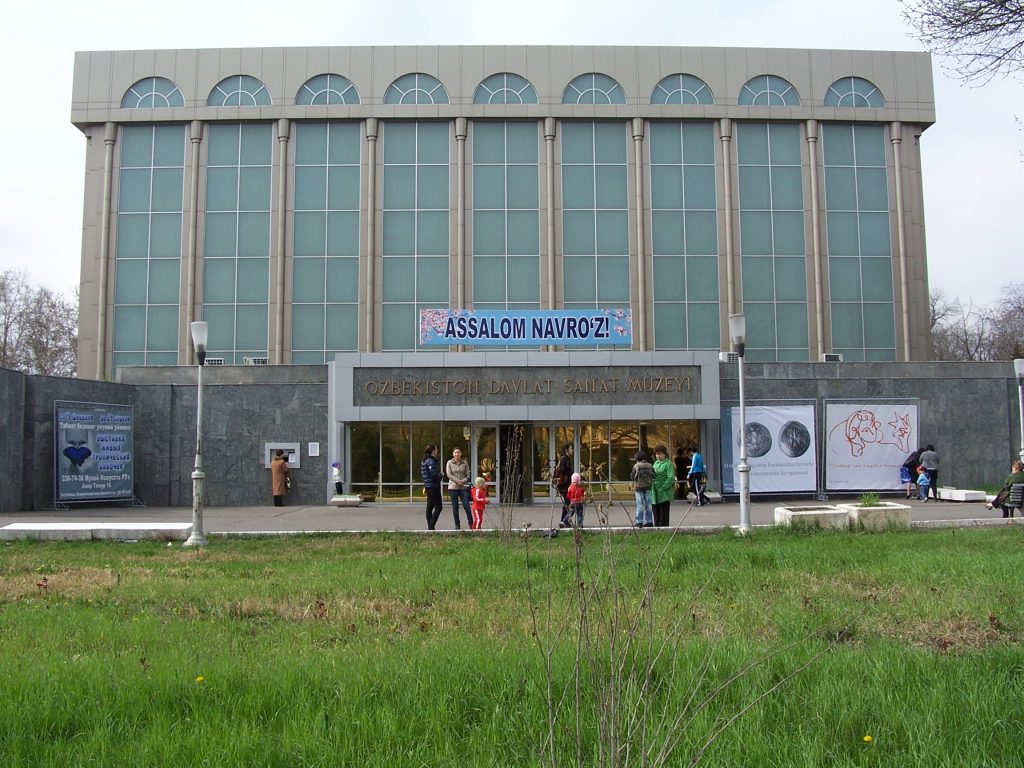
The exhibition or collection of the best works of Uzbek masters in 1927 was called as “Exhibition of the National Economy of Uzbekistan”. In 1997, the authority and control of the museum was handed over to the Ministry of the Culture of the Republic of Uzbekistan and the museum name changed to “State Museum of Applied Arts”. You can find 7000 types of applied arts such as handmade embroidery, skull-caps, jewelry, carpets and other craftsmanship works. The museum is divided into 3 groups. One group has applied arts on ancient traditions whereas the other group has traditional craftsman methods. In the 3rd group, you will find colorful ornaments of modern artwork.
State Museum Of History Of Uzbekistan
Founded 136 years ago, State Museum of History is one of the oldest museums of the Central Asia. The first floor has amodernexhibition gallery of various themes whereas the history of Uzbekistan from ancient times up to the Timurid era. You can find 60,000 archaeological, 80,000 numismatic and 16,000 ethnographical items which sums up to 250,000 with exhibits.
With a height of 220 meters and having the highest meteorological station, TV Tower is the highest construction in the Central Asia. It is used for satellite TV, cellular, and paging communication. It broadcasts 5 television and 4 radio broadcasting programs.
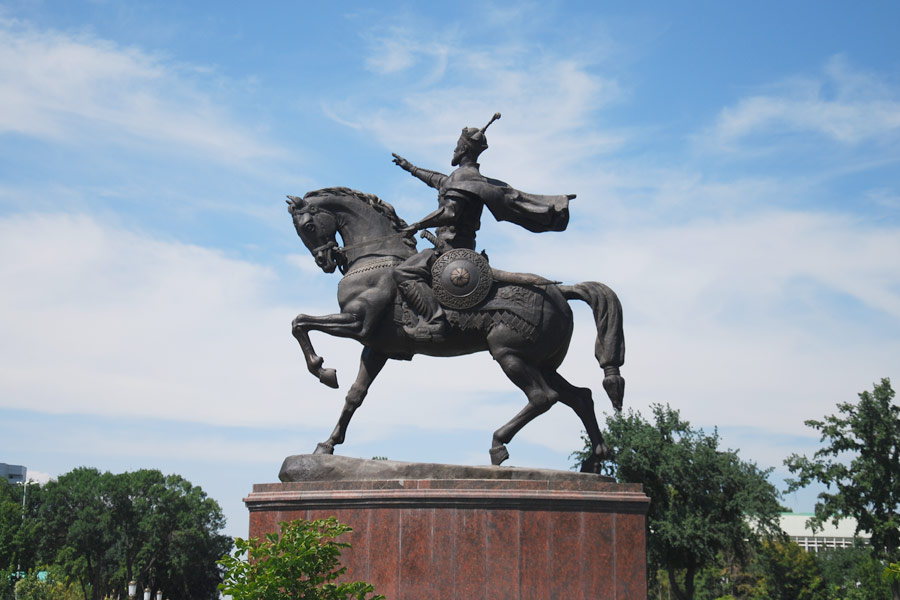
The square was named after Amir Timur, the commander and founder of a huge medieval. In the early 19th century, Tashkent was used as the center of Turkestan Military Command with Russian. By the order of General M.Chernayeb, it was established in 1882. On the center of the square, there is a small park surrounded by the buildings of Gymnasium, normal school and state bank. You can see the bronze made monument of Amir Timur with imperial regalia on a horse with his famous motto “Power is in justice”.
Established in 2006, Amir Timur Museum is one of the best Uzbekistan Tourist Attractions situated in Tashkent. The building is designed by the style of the Oriental architecture and topped by a huge blue dome. The windows are in the form of the arched niches. You can find ancient paintings, historical documents related to Amir Timur, manuscripts, weapons, old clothes, utensils, and coins.
Built in 1891, Romanov Palace is the architecture design of architects A.L. Benoit and V. S. Geyntseltsman. It was the residence of Prince Romanov. The prince was exiled by his parents to Tashkent in 1877 and he died in 1918. The palace is decorated with carved grids, towers and other decorative works. The interior design of halls of the private residence was lined with dark oak, designed with carved cornices and golden paintings. There are the bronze made wild dogs and deers in front of the residence while there is a big garden on the back side of the palace.
We hope, the above listed Uzbek monuments, Uzbekistan Tourist Places can make your Uzbekistan Tours most enjoyable and a lifetime experience forever. A visit to Uzbekistan can make you experience the unique and fresher one.
Euroasia Travel is one of the best and dedicated tours Operator has been working for more than 10 years. We offer different types and levels of services like from standard to luxury, transportations and facilities based upon your demand for the taste, desire and time. For further information may contact us @ +99871 277 9009